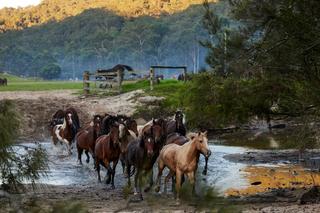Inbound tourism is big business and vital to the visitor economy. Before you make the decision to enter into the inbound markets, you need to understand how inbound tourism works, know who is visiting Australia and ensure that your product is ‘export ready.’
What is inbound tourism?
Distributing or selling your product internationally is often referred to as ‘inbound tourism’ or ‘export tourism.’
‘Inbound’ refers to international visitors entering Australia and ‘export’ refers to the product sold overseas and paid for in foreign currency, even though the product experience takes place in Australia.
Why is inbound tourism good for my business?
Domestic tourism is the bread and butter of most visitor economy businesses. Adding the inbound market segment to your strategy not only provides opportunities to increase visitation to your business but also allows you to diversify your markets and access new areas of business that may balance out regular domestic travel patterns.
Benefits of inbound tourism
- Rewarding: Opportunities to meet people from a range of cultures and backgrounds
- Long lead times: Booking lead times are usually longer, especially from long-haul markets like the UK and USA. This allows for better business planning
- Higher yield and spend: International visitors have a higher spend per person because of their longer length of stay. The average international visitor to NSW will spend almost four times more in the state than the average domestic overnight visitor.
- Managing seasonality: International travel patterns are not focused on weekends or school holidays and may assist to level out seasonality problems
- Diversifying risk: Spreading risk across a range of international markets can minimise the impact of any changes in the domestic or a single international travel market
- New distribution channels: Tapping into inbound tourism networks opens new forms of distribution and gives millions of potential visitors around the world easy access to your product.

What does Destination NSW do to grow inbound tourism?
Destination NSW’s role:
- Destination NSW focuses its international marketing on key markets including USA, UK, India, China, New Zealand, Japan, South Korea, Germany, Singapore, Malaysia, Indonesia, France, Hong Kong, Taiwan, Canada, and Vietnam.
- Drives inbound tourism bookings from these markets by collaborating with trade partners such as wholesalers and airlines to run destination marketing campaigns and promote travel packages to NSW.
- Educates the travel trade on NSW export ready product and coordinates trade events, travel trade familiarisation visits to NSW and sales missions overseas.
- Coordinates and plans activities that you can participate in with them once your product is export ready.
Destination NSW should be a first point of contact and one of your key partners. Refer to Inbound Opportunities for full details on the opportunities.
How can you grow inbound tourism?
To tap into inbound business and distribute your product internationally your products need to be export ready. Being export ready means you are ready to work with distribution partners to sell your product. This includes third party distributors, or trade sales partners, such as inbound tour operators (ITOs), wholesalers, online travel agents (OTAs) and retailers to sell your product to visitors overseas. Export ready businesses also factor appropriate commissions into their pricing.
International markets are very competitive and are not necessarily suitable for every product. Before you begin you need to have a good understanding of the international markets and where your product fits, you will need systems and processes in place to manage international visitation, to be prepared to work in partnership and ready to make a long-term commitment.
As a rule of thumb, it takes two to four years to become established in the international market. You need to be patient as financial returns can be slow, so it is important that you have a solid business structure in place, with suitable existing cash flow before you begin your journey into international markets.

Is my business ready to become export ready?
There are things to consider when assessing if your product is export ready. You are on the way to becoming export ready if you:
- Are established in the domestic market, operating for at least a year
- Sell products through domestic distribution channels, like a visitor centre or hotel concierge
- Have a successful domestic marketing strategy
- Offer same-day booking confirmation via email or online
- Have thoroughly researched the international markets to establish where your product fits
- Clearly understand the differing needs of international markets compared with domestic markets
- Understand the international distribution system including Inbound Tour Operators, International Wholesalers, Retail Agents & Online Travel Agents
- Understand the concept of commissions and nett rates
- Are prepared to pay 30% commission for bookings from ITOs and 20% commission for bookings from wholesalers
- Have an active quality assurance program to ensure your product maintains a high standard
- Can guarantee rates for 12 to 18 months in advance
- Are prepared to work cooperatively with Tourism Australia, Destination NSW and your regional and local tourism organisation.
